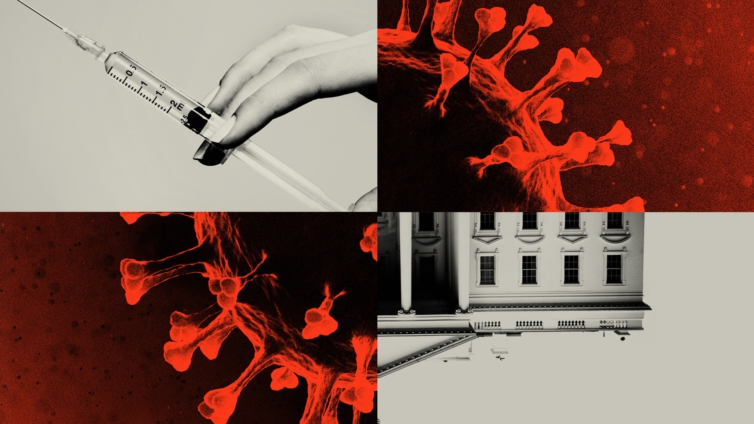Three months ago, no one knew that SARS-CoV-2 existed. Now the virus has spread to almost every country, infecting at least 446,000 people whom we know about, and many more whom we do not.
It has crashed economies and broken health-care systems, filled hospitals and emptied public spaces.
It has separated people from their workplaces and their friends. It has disrupted modern society on a scale that most living people have never witnessed.
Soon, almost everyone in the United States will know someone who has been infected.
Like World War II or the 9/11 attacks, this pandemic has already imprinted itself upon the nation’s psyche.
A global pandemic of this scale was inevitable.
In recent years, hundreds of health experts have written books, white papers, and op-eds warning of the possibility. Bill Gates has been telling anyone who would listen, including the 18 million viewers of his TED Talk.
In 2018, I wrote a story for The Atlantic arguing that America was not ready for the pandemic that would eventually come.
In October, the Johns Hopkins Center for Health Security war-gamed what might happen if a new coronavirus swept the globe. And then one did. Hypotheticals became reality.
“What if?” became “Now what?”
So, now what? In the late hours of last Wednesday, which now feels like the distant past, I was talking about the pandemic with a pregnant friend who was days away from her due date.
We realized that her child might be one of the first of a new cohort who are born into a society profoundly altered by COVID-19. We decided to call them Generation C.
As we’ll see, Gen C’s lives will be shaped by the choices made in the coming weeks, and by the losses, we suffer as a result.
But first, a brief reckoning. On the Global Health Security Index, a report card that grades every country on its pandemic preparedness, the United States has a score of 83.5—the world’s highest.
Rich, strong, developed, America is supposed to be the readiest of nations. That illusion has been shattered.
Despite months of advance warning as the virus spread in other countries, when America was finally tested by COVID-19, it failed.
“No matter what, a virus [like SARS-CoV-2] was going to test the resilience of even the most well-equipped health systems,” says Nahid Bhadelia, an infectious-diseases physician at the Boston University School of Medicine.
More transmissible and fatal than seasonal influenza, the new coronavirus is also stealthier, spreading from one host to another for several days before triggering obvious symptoms.
To contain such a pathogen, nations must develop a test and use it to identify infected people, isolate them, and trace those they’ve had contact with.
That is what South Korea, Singapore, and Hong Kong did to tremendous effect. It is what the United States did not.
As my colleagues Alexis Madrigal and Robinson Meyer have reported, the Centers for Disease Control and Prevention developed and distributed a faulty test in February.
Independent labs created alternatives but were mired in bureaucracy from the FDA.
In a crucial month when the American caseload shot into the tens of thousands, only hundreds of people were tested.
That a biomedical powerhouse like the U.S. should so thoroughly fail to create a very simple diagnostic test was, quite literally, unimaginable.
“I’m not aware of any simulations that I or others have run where we [considered] a failure of testing,” says Alexandra Phelan of Georgetown University, who works on legal and policy issues related to infectious diseases.
The testing fiasco was the original sin of America’s pandemic failure, the single flaw that undermined every other countermeasure.
If the country could have accurately tracked the spread of the virus, hospitals could have executed their pandemic plans, girding themselves by allocating treatment rooms, ordering extra supplies, tagging in personnel, or assigning specific facilities to deal with COVID-19 cases.
None of that happened. Instead, a health-care system that already runs close to full capacity, and that was already challenged by a severe flu season, was suddenly faced with a virus that had been left to spread, untracked, through communities around the country.
Overstretched hospitals became overwhelmed. Basic protective equipment, such as masks, gowns, and gloves, began to run out.
Beds will soon follow, as will the ventilators that provide oxygen to patients whose lungs are besieged by the virus.
Latest Stories
-
Queenmother calls on President-elect Mahama to appoint more women in his government
24 minutes -
Atletico Madrid beat Barcelona to go top of La Liga
42 minutes -
Usyk breaks Fury’s heart with points win in rematch
44 minutes -
Ghana-Russia Centre to run Russian language courses in Ghana
6 hours -
The Hidden Costs of Hunger: How food insecurity undermines mental and physical health in the U.S.
7 hours -
18plus4NDC marks 3rd anniversary with victory celebration in Accra
9 hours -
CREMA workshop highlights collaborative efforts to sustain Akata Lagoon
10 hours -
2024/25 Ghana League: Heart of Lions remain top with win over Basake Holy Stars
11 hours -
Black Queens: Nora Hauptle shares cryptic WAFCON preparation message amid future uncertainty
11 hours -
Re-declaration of parliamentary results affront to our democracy – Joyce Bawah
11 hours -
GPL 2024/25: Vision FC score late to deny Young Apostles third home win
11 hours -
Enhancing community initiatives for coastal resilience: Insights from Keta Lagoon Complex Ramsar Site Workshop
11 hours -
Family Health University College earns a Presidential Charter
12 hours -
GPL 2024/25: Bibiani GoldStars beat Nsoatreman to keep title race alive
12 hours -
GPL 2024/25 Bechem United keep title hopes alive with narrow win over FC Samartex
12 hours

